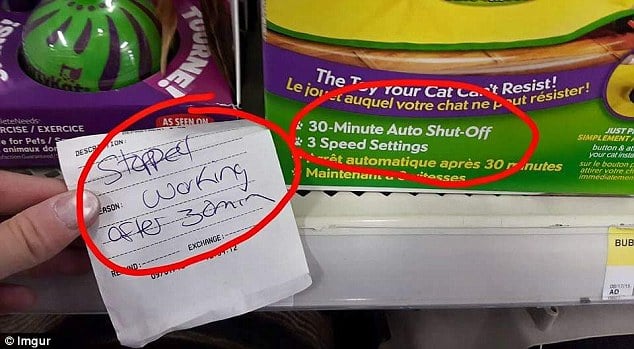The Quick and Dirty Guide to Ecommerce Returns (and How to Reduce the Same)

There’s nothing more thrilling than to see your phone lit up with a sale (except maybe skydiving). But is a sale really a sale?
At least 20% of all products ordered online are returned, making it extremely difficult for an ecom operator to scale profitably. Product returns are a plague – they eat into your profits, destroy margins and leave you distraught.
Return rates are higher than ever owing to expectations mismatch and impulse shopping. It’s detrimental to an ecommerce store, but it also poses an opportunity.
There are a bunch of ways to improve your return rates and handle each reason for return tactfully. But to solve a problem, we must first identify it.
Bear with me as I tell you the top reasons why customers return your products and how you can minimize that percentage and protect your profit margin.
Why do customers return products?
We are yet to fully comprehend the human brain, and until that happens, there’s no way to know why customers return products or ask for a refund. You’d be amazed to learn the level of ridiculousness as to why a person returns a product.

Source: DailyMail
But one thing is for sure – no matter the reason for returning, it’ll happen, and you can’t stop it. Here are a few recurring reasons why people return items.
1. It’s the holidays
The holidays are the most popular time of year for online shopping. Unsurprisingly, it’s also the time when the returns are super high. As per data, around $100 billion worth of goods is returned during the holiday season, i.e., November, December, and January.
The reasons are varied.
- They bought a gift for a friend who returned because the size wasn’t right or the color was off.
- They’re returning because they shopped a little more than expected
- They bought stuff they didn’t need – doodads
- Simply wants to return it because now they don’t like it (i.e., impulse buy)
Although product sales soar during the holiday season, the returns make it difficult for merchants to run a sustainable business.
2. They were going to return the product eventually
One of the biggest differences between an online store and a physical shop is that you can touch and feel and product in a physical store. While AR/3D modeling has helped, it isn’t the same as using the product first-hand.
This leads to bracketing, where they buy multiple products from different stores and of various sizes, colors, or styles of an item, knowing they will return some if not all.
This isn’t a small thing – almost 60% of customers are "bracketing,” Frankly, we can’t blame them because how else will they know what fits how the product works or whether the color is right.
3. The product didn’t work as the customer expected
It’s as it says – the customer thought the product was the right one for them, but upon receiving it, it didn’t turn out the way they wanted it to.
While this happens across industries, apparels are directly in the line of fire. The average return rate for apparel is 25% compared to 20% as an aggregate across all industries.
It tracks too – the shirt doesn’t fit, the top’s color isn’t right, the sweater quality is bad, and the list goes on.
4. The classic “product didn’t match the description”
Like I said before, customers don’t have the luxury of truly “getting to know” your product while shopping through an ecommerce store. There are only a handful of things they can do to gauge the efficacy and usefulness of a product – one of them being product descriptions.
Ideally, product descriptions should be thorough and precisely explain what the product does, who it is for, and why it’s worth your time and money.
Josh Wayne, VP Commerce Products at TrueCommerce, weighs in:
“One of the biggest reasons we see for ecommerce returns is inaccurate product information. If a customer sees a product online and reads about it, they expect the product they receive to match that. When it doesn’t—when it’s a different color, or size, or compatibility—it’s going to get returned right away. Not only that, but a dissatisfied customer is less likely to buy again, and might even post a negative review that could hinder future sales.”
If your product descriptions are misleading, it makes the customer feel cheated, and they will likely bounce off to a competitor’s website, thus costing you a sale.
5. Straight up fraudsters
While most returns are due to bad products, whimsical customers, or poorly written product descriptions, there’s a naughty group that purchases products with stolen credit cards or some other nefarious way.
And this is a huge sum – around $25 billion in returned items in 2020 was fraudulent. Yes, it’s more common than you imagined.
Ecommerce returns best practices – six strategies that work
It’s virtually impossible to predict the reason for returning a product, but you can prepare for it and implement strategies to minimize the return. By leveraging these fairly simple strategies, you’ll have happy customers and more revenue. A win all around!
1. Ensure product information is correct and easily accessible
By common sense, public-facing information should accurately reflect the physical product in the case of an ecommerce store. If the customer receives something that doesn’t match the product description, expect a return to come your way!
To avoid that, all your product information like descriptions, product images, and the likes should be impeccably correct and easily accessible. Here are a few ways to ensure your product descriptions are perfect:
1) For clothing products, have a size guide. For instance, Feat Clothing, a Wonderment customer, shows a clear size guide when you click on “Find my fit.”
2) For food products, you should clearly state the ingredients or anything else your customers must know. For example, Flock Foods, a Wonderment customer, clearly displays the ingredients while telling you the benefits of having their chips.
But these are just examples. Depending on what you sell, your product descriptions will vary. However, remember the golden rule – your product description must match the actual product irrespective of what you sell.
2. Use immersive technology in your store
When was the last time you returned a product that you shopped in-store? I’m guessing it’s not frequent. Obviously, you have to get a “look and feel” of the product before pulling out your credit card.
Since the same experience is absent online, you could leverage 3D/AR tech to create a similar experience and showcase your product in a more immersive way. And consumers love you for it since 66% of them want to use AR to inform their purchase decisions.
For example, Jazmin Chebar does a fine job with its 3D video implementation on select products. I can visualize the product better even without visiting a physical store.
While 3D/AR tech can’t replicate a retail store experience, it can let customers know what they’re buying, thus reducing returns.
3. Find out if it’s a product flaw (and then fix it)
As a merchant, you might not know that your product has a flaw. So, it’s always wise to ask customers why they’re returning your product – most of the time, they will tell you.
For Kenko Tea, customers returned the product because the tin can was missing an outer lid.
“We sell Japanese green tea in tins, and occasionally the product arrives sealed but missing the outer lid. This was a disaster as the customer couldn't reseal the tin after opening,” says Sam Speller, Director, and Kenko Tea.
They went back to their supplier and solved the problem by redesigning their packaging.
“We had to go back and work with our suppliers to redesign our packaging to stop this from happening in this case. Over time we have gotten our Amazon returns down from 1.4% to under 0.8%,” adds Sam.
4. Reduce shipping delays
In the world of Amazon’s same-day delivery, shipping delays are frowned upon. But sometimes, you can’t help it because it’s out of your control – carrier delays, an act of god, warehouse issues, etc.
And owing to this, customers tend to return the products, especially when it’s a gift – I mean, who would want to get a gift 10 days after the birthday, right?
So, all you can do is provide accurate shipping information, inform customers of order delays and try and fix it if it’s fixable.
Sam from Kenko Tea agrees:
“We have found just being in contact regarding tracking updates reduced the uncertainty. Customers were more understanding and less likely to return, as long as they were kept updated and informed.”
You can easily keep your customers informed of the delays using an automated flow created with Wonderment and Klaviyo.
5. Offer to exchange the product
You already know the return process is a difficult ordeal – the customer has to go all the way to the post office to send it, you receive the parcel, check for damages or verify the reason for return, communicate with the customer, and then when all’s said and done, you need to refund the price.
Needless to say, this isn’t chaos-free. So, instead of that, offer your customer to exchange the product. They can choose an alternate size/color of the product, and you simply ship it.
That’s not all – you can actually automate it with a tool called Loop. Customers can exchange an item for another size or color in one click. How cool is that?
And if a customer insists on wanting a refund for their purchase, Loop helps merchants streamline their returns process. It uses data from a returns form and your returns policy to automatically approve or deny requests.
6. Protect yourself against fraud returns
US retailers say that about 8% of all returns are fraudulent. And the value of that 8% is around $18.4 billion. This is no joke, and it’s quite inevitable, but there are ways you can prevent this and keep your store safe.
- Keep a blacklist of “serial returners” and ban them from purchasing from your site. While it’s harsh, you need to protect your business from losing out on dollars.
- Don’t offer free return shipping – this will potentially discourage fraudulent people from returning the product.
- Only accept returns that come with a valid receipt – this prevents the fraud people from returning stolen items or merchandise purchased from another store.
- Avoid wardrobing by not accepting a return of clothes without the original tag or protective seal.
You can’t ignore returns, but you sure can manage them
The stats are true – 10.6% of all online purchases are returned. Safe to say, returns will happen, but you can be prepared for it.
Keep in mind the best practices to reduce returns – write detailed product descriptions, use augmented reality to better explain your products, fix your product/process flaws, and always ask customers for feedback.
And when the returns do happen, always inform them of the return status and try and see if they will exchange the product instead of returning, thus saving you a lot of headaches.






